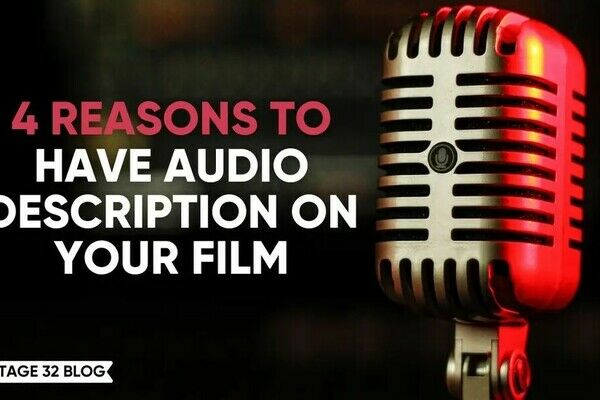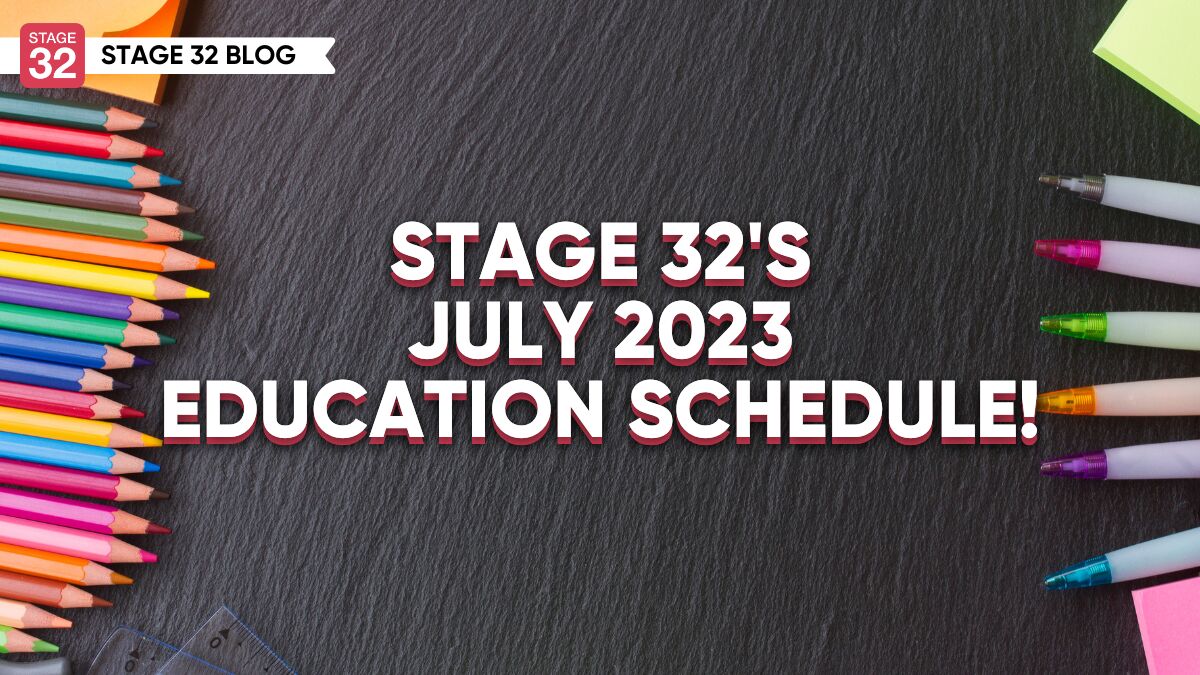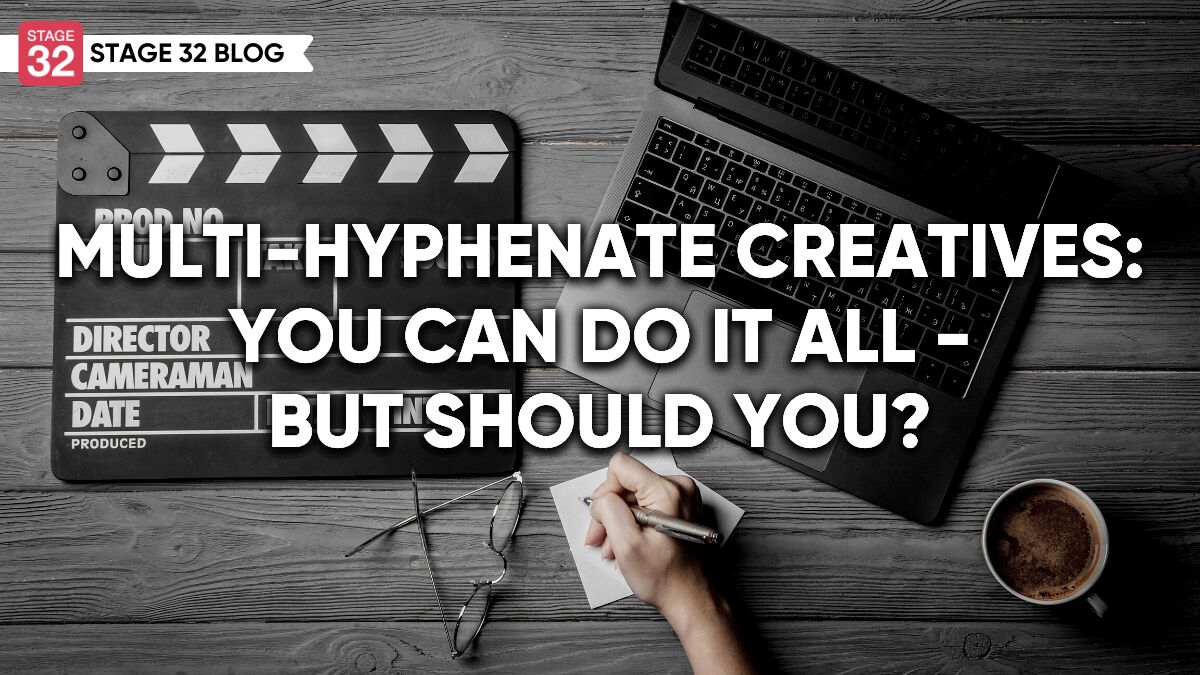Fall in Love with Filmmaking Again: The Key to Writing Action
Lights, Camera, Action! Okay, technically, it would be called out as "Sound, Camera, Mark It, Set, Action." It's literally built into the DNA of every film and television production, and yet, as a genre, ACTION can be incredibly difficult to execute well.
Recently, I had a chance to catch up with my friend and filmmaking mentor, Shane Stanley. He generously shared some insights during our special Produced Script Coverage Report (Mondays in the Writer's Room). We reviewed what it took to greenlight his latest action/drama feature film, Night Train (2023), starring Dani C. Ryan (Mistletoe Mixup; Love, Lost & Found) and Diora Baird (Cobra Kai; Texas Chainsaw Massacre: The Beginning). As a filmmaker and producer, we unpacked what he looks for in action scripts before moving into production.
For his last three projects, Shane, a California native, has partnered with screenwriter CJ Walley, hailing from the UK - Break Even (2020), Double Threat (2022), and Night Train (2023). An immensely talented storyteller best known for creating the online script hosting platform Script Revolution, CJ has also shared his speedy yet engaging writing process in his recent book Turn & Burn. Seriously, go read it. It's amazingly detailed yet freeing for screenwriters who struggle with letting go of the writing process and moving into the production process. After all, that's really the point of screenwriting, isn't it? To eventually get what's on the page onto the screen?

From the Emmy-award-winning filmmaker and author of What You Don't Learn in Film School, Shane's knowledge of story and production was exactly what they needed to get it from script to screen. He's taught extensively, both on set and in universities on how to make your film, regardless of the budget. His book was written to help those looking to make their projects even if they haven't gone through film school, but it's also incredibly insightful for filmmakers at any level!
I wanted to share Shane's wisdom with you, my Stage 32 community, before you submit your scripts for the next Action Screenwriting Contest. Let's talk about what it really takes to make an action film!

THINK LIKE A FILMMAKER, WRITE LIKE AN EDITOR
"There are three scripts - the one you write, the one you film, and the one you cut. Don't forget that, writers!" - Shane Stanley.
We've all read this quote in some form or another, but until you've lived it, it's hard to fully digest it. Shane has actually worked professionally as all three - screenwriter, director, and editor. He even started out as an actor! The greatest advantage to this is that he knows how things are lost and gained at every stage. A siloed screenwriter, however, may try to write assuming 'if I just write it correctly in the first round, then there won't be any last-minute changes necessary in production or post-production'. If you are one such perfectionist, then to you, I say, "Learn to play jazz!" Those last-minute pivots are what give the project life!
Consider a hairstyle before you walk a red carpet. The cut, color, and style are separate stages, but they all have to work together in order to pull off the finished look. For that initial cut - just like the initial script - you have to let your hair grow out long enough first. Maybe do a little research about the shape you'd like and whether or not it will work for your hair type. Even source reference pictures - much like a mood board or a rip-o-matic! But here's the critical part - YOU CANNOT GROW OUT YOUR HAIR TO THE PERFECT CUT. The process is always to grow it out, cut it, then grow it out and cut it again. There has to be room to give and take. So, when you're writing, write it all so it can be cut.
WHOA, K-Dawg… are you saying I can write a 160-page feature so it can be cut down to 95 pages? Kinda… YOU still have to be the one to cut it down initially, but put those extra scenes in a dump pile you can pull from later if need be. But Shane says it best:
"I learned from Jeff Maguire… that there is nothing worse than not having enough. As a writer, you have to give your producers, your actors, your directors enough to work with so we can make that decision in the edit bay."
Shane also made a plea for more writers to get involved with the other stages of production:
"I wanted to learn to cut, and I wish writers would learn to cut. Do you understand the power you would possess as a writer if you knew how to edit a film? If writers can spend more time on sets, even as grips, get on set and see what the written word does on set. It will do lightyears for you as a writer."
Considering how easy it is to make content right now, dipping a toe into production or video editing is easier than ever! If you want to meet more editors, check out the Post-Production Lounge on Stage 32, or meet more filmmakers in the Filmmaking Lounge!
DO A TABLE READ
One of the issues that often comes up for up-and-coming filmmakers is affording an action film. Shane recommends, "Do a table read with the actors, and… things start coming up - there's scheduling, there's locations, there's talent… [but] you should have fun when you're making movies." That is to say, don't worry about the budget at first. You and your producer or a development executive can work on ways to adapt the story to fit the budget. But if your producer is not having fun while reading the script, then… what is the point?
What makes it fun? Chases, escapes, fighting, sports - anything physical with a tangible victory. A table read can quickly identify the essentials required for any genre - complex characters, clear and compelling action towards a goal, complications, and obstacles - but it will also highlight pacing and plot. These two aspects are crucial to an engaging action script! Otherwise, the setup for an action film is relatively straightforward. Consider how it has to be to remain nimble throughout production:
"What's funny about [Night Train] is, if you watch it, there is a scene where… the FBI Agent is chasing after Holly, and all of a sudden, the father appears and cuts her off, and then this Baja Truck takes over and Renzo turns to Holly and says, "that's Maxwell's men! They'll kill us!" That was never in the script. It's the reality of being out there and knowing we're not going to have [one of our lead actors] because of a [press junket]... and I have to come up with something… and that's okay. You take [creative] liberties as a filmmaker… and you have to say "who cares", it's an action movie, let's throw some caution to the wind, and [see if it works]. And then you get back to the edit bay, and you say "Okay - how do we make this play?" and just have fun as a filmmaker."
When the essentials are there, they stand out and stand on their own. If you'd like to invite actors to help you workshop your script through a virtual table read, reach out with a post on Stage 32's Acting Lounge!

THE STORY & THE SPECTACLE
Many writers struggle with how much story versus how much spectacle to write into their action film. Here is what I have gleaned from my time with Shane: give us just enough story to enjoy the spectacle. That, and "Show the bandage, don't show the boo-boo." That is to say - if the story relies on the spectacle, then it's not a strong enough story.
All Action Films are High-Concept, but NOT All Action Films are High-Budget.
Knowing the goal and seeing a character employ strategies towards achieving that goal are the only two sides of the "action" coin on the way to an epic ending. Is anyone else imagining a side-scrolling video game as the perfect analogy for an action film? Yeah. It's that unmistakable.
Consider how simple, yet emotionally important, the setup for John Wick (2014) is. Dude kills John's dog, which John was using to process his grief, so John seeks revenge against dude in order to complete his grieving. Everything else is just a consequence of that mission in that world. Change the locations and the talent, and you could make the same film at a fraction of the price.
You can also pivot at any point in production because you know all you need to know. As Shane reminded us, "sometimes to capture your movie magic, it's just a matter of being there, being prepared, and even if it doesn't make sense, if it looks bad-ass, get it and decide in post if you can keep it. Sometimes we screw the pooch, but sometimes we catch magic."
And just to be clear - you, as the writer, cannot guarantee what parts of "the spectacle" end up in the film, but you are solely responsible for nailing down the essential components of the story. Shane regaled us with an epic tale where "[Double Threat] was written in 4 days, we lost 9 locations in one afternoon, we called [a friend], and said, "we've lost all our locations, what do we do?" and he said, "You got the keys to my property, go shoot your movie." And we shot [the rest of] Double Threat on the side of a mountain in Castaic in 12 days." Holy WOW!

MAKE US FALL IN LOVE WITH FILMMAKING AGAIN
This is one of my favorite takeaways from our time with Shane, especially as a fellow producer who just spent two years on an epic project. Shane reminded us, "When you approach a producer, consider whether or not this is something someone would be willing to risk their career to make. Remember, a studio executive keeps their job by saying "no." So, cater what you write to what appeals to them." Because people only end their career smiling if they enjoyed the ride!
He also equated a filmmaker's relationship to a script as a love affair that takes us away from our family for two years at a time. So, he says, "Seduce us. Make us HAVE TO make your movie. I read [CJ's] script and it made me want to be a filmmaker again." High praise, indeed!
Oh, and Shane also suggested you "get out of the house. I love outside. Who wants to be inside? Especially after the last few years. Outside is freedom. It's euphoric. We just did [Double Threat] to get out of the house."
Get your producers excited to get out of the house!
Can you imagine that? A whole project was greenlit NOT because of the concept, NOT because of the attachments, and NOT because of the assessment of return on investment. A project could be greenlit just because everyone involved wants something to work on and all those other things are "good enough."
Take the time to figure out what the other people you want attached to your project want. Then, give them as much of that as possible so they have a greater incentive to say "yes"!

FINAL THOUGHTS
Want to hear more Shane Stanley wisdom? Don't worry - you can watch the replay in the Writer's Room! Shane ended our Coverage Report with, "Be good to one another, keep writing, do your thing, don't worry about what other people think, just write what feels right, and it'll figure itself out."
If you're looking for ways to get your action film produced, definitely check out one of Shane's most popular webinars, "How to Write Your Script for Budget and Schedule so Producers Will Actually Want to Make It," and then submit it to the next Stage 32 Action Screenwriting Contest!
Let's hear your thoughts in the comments below!
Got an idea for a post? Or have you collaborated with Stage 32 members to create a project? We'd love to hear about it. Email Emily at blog@stage32.com and let's get your post published!
Please help support your fellow Stage 32ers by sharing this on social. Check out the social media buttons at the top to share on Instagram @stage32 Twitter @stage32 Facebook @stage32 and LinkedIn @stage-32
| Stage 32's July 2023 Education Schedule! |
| Multi-Hyphenate Creatives: You Can Do It All - But Should You? |
Search Stage 32 Blog
There are now 4043 blog posts for you to enjoy. Search them all by tags below.
Acting, Advice, Cinematography, Coffee & Content, Composing, Contests, Distribution, Featured, Filmmaking, Financing, Inspirational, Networking, Producing, Screenwriting, Success Stories, Tips, Trending,Relevant Tags
Recommended Articles

Stage 32 + DramaBox Join Forces to Launch World's First Vertical Drama Incubator

Forbes Spotlights Stage 32 Certification!

Stage 32 Now Certifying the Dallas Film Commission!

Insider Intel: The Studio War & The Rise of Indies

Coffee & Content: Why Your Pitch Needs to Be Human

Coffee & Content: Why Your Next Step Matters More Than the Perfect Step

Find Your Footing on Stage 32: Join Our December Community Open House

4 Reasons To Have Audio Description On Your Film

Coffee & Content: Low Stakes Stories, High Stakes Decisions







